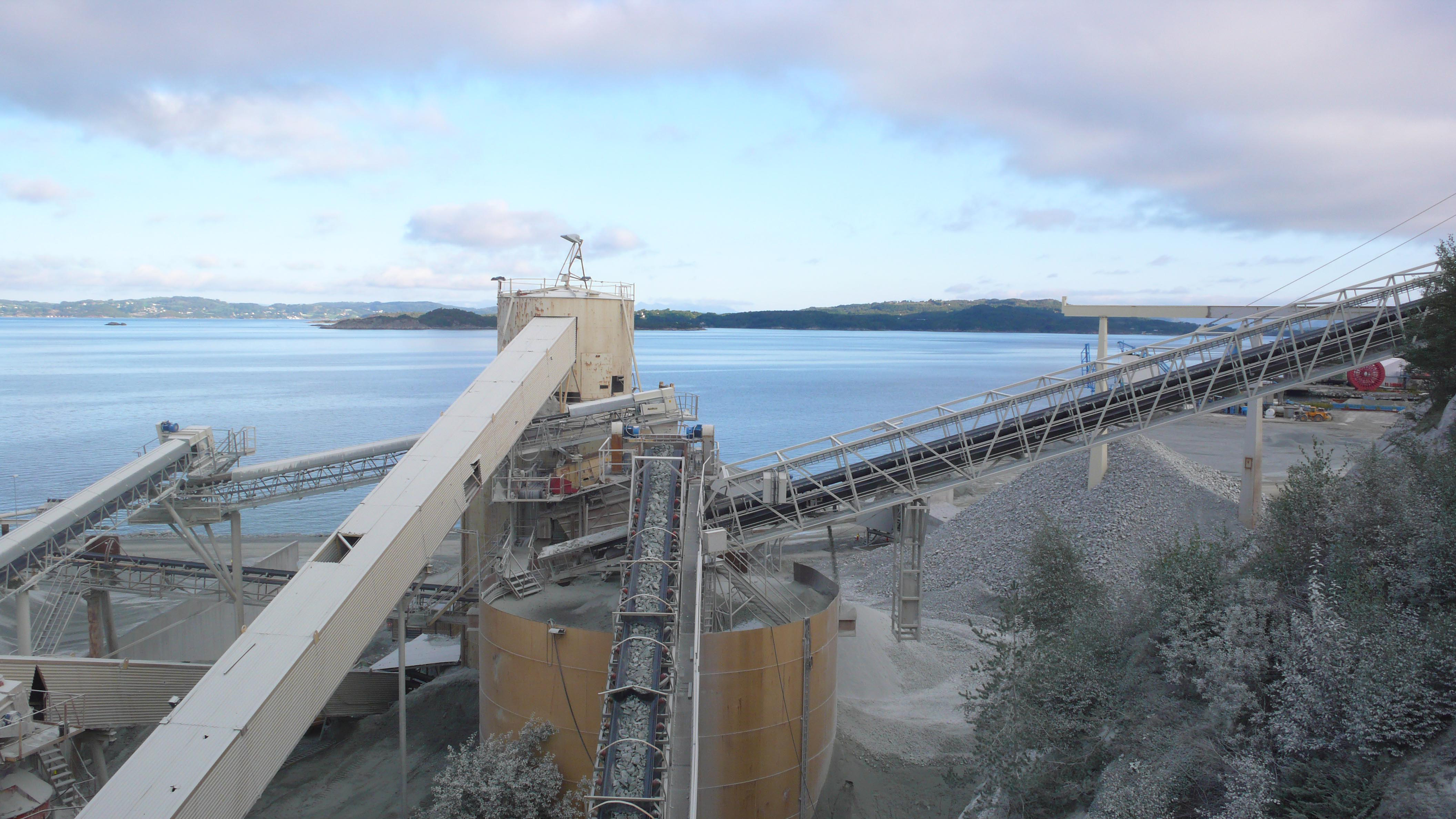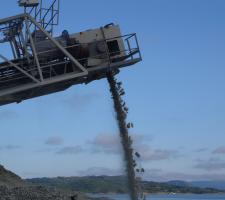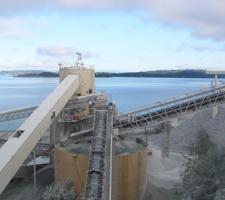
Norway has an embarrassment of riches when it comes to hard rock aggregates to the extent that it exports over a quarter of its production each year
Aggregates in Europe are generally local products that are limited by the cost of transportation to a 50km radial geographical area around the quarry. But that is where Norway is different - its hard rock aggregates are shipped many thousands of kilometres by sea to meet demand elsewhere in Europe.
Annual aggregate production in Norway is estimated to be around 67million tonnes with 26% of that volume sold to foreign customers - a market valued at €83million a year by the Norwegian Geological Survey (NGU). Demand is high not just because of the lack of materials in these other countries but also because of the quality and quantity of hard rock aggregates available in Norway.
This large export market and the conventional need for local materials has created two types of quarry operators in Norway. The majority of the operators are relatively small and these serve the domestic market, but there are a number of operators that own super-quarries which meet some local demand but mainly exist to serve the export markets.
According to the NGU, the main players in the Norwegian aggregates market are
Many of these quarries are located on Norway's extensive coastline, most of which has deep water anchorage that makes it ideal for loading of large bulk carriers that make exporting aggregates more cost effective. Local government planning in Norway is carried out in conjunction with the NGU to identify and classify potential sites for future coastal quarries. It is clear from the planning authorities' approach that it is expected that these exports will be a growth area - Norsk Stein has already said that it plans to grow the Jelsa output to 10million tonnes per year.
Aggregate exports from Norway have grown steadily over the last 20 years from just under 3million tonnes per year in 1989 to approaching 16million tonnes last year, including offshore use. The main export markets for Norwegian aggregates are Germany, Denmark, the UK, the Netherlands and Poland.
Russia is also a developing customer for Norwegian aggregates and Halsvik Aggregates has recently started to supply material for a new pipeline project off the northern Russian coast. The company supplied 24,000tonnes of granite for the scheme which was delivered by Van Oord.
Rock reserves
The geology of Norway is central to its success as a major exporter of aggregates - the country is made up almost entirely of Precambrian and Palaeozoic igneous and metamorphic crystalline rocks. However, the country also has some sand and gravel deposits, which account for 15million tonnes of production each year.
The NGU has extensively mapped sand and gravel and hard rock deposits in Norway and information about these is available through an online database - ww.ng.no/grusogpukk. According to the NGU, Norway can no longer claim to have limitless aggregate resources as many deposits lie under areas allocated to other purposes in municipal land-use plans. The organisation hopes that the database will help provide local authorities with the essential information about aggregate reserves to consider all aspects in the planning process.
As part of this mapping process, the NGU has identified a number of active and potential quarries that are of national importance. This list includes 34 hard rock aggregates and nine sand and gravel sites that are already in operation, plus five further aggregates sites and two sand and gravel deposits that should be protected for future development.
New dimension
Production of dimension stone for buildings and monuments is also a major industry in Norway and generated a turnover of around NOK1billion (€112million) in 2007. Around 60% of the dimension stone is exported either as decorative finishes in the form of cut marble, granite or larvikite, as well as slate, flag stones and other building materials. Dimension stone is also another key area for exports in the form of blocks of rock for coastal defence projects and Norway has a significant share of the €10billion business in Europe.
Market development
A report from the NGU and the Directorate of Mines suggests that the market for quarried material grew faster than any of the other extractive industries in Norway in the last few years. The report estimates that Norway's aggregate production was at least 59million tonnes in 2006 and rose to 67million tonnes in 2007. However, it is suggested that the total may be much higher because not all quarry producers responded to the survey and there are a number of smaller quarries that are not operated on a regular basis but when demand requires it.
The study shows that turnover from the production of crushed rock and sand and gravel aggregates grew from NOK3billion (€336million) in 2006 to NOK3.8billion (€425billion) in 2007. Much of this rising demand can be accounted for by increasing exports but domestic demand has steadily increased in recent years but it is estimated that each of the 4.9million people in Norway account for the consumption of 12tonnes of aggregates each year.
Of the 51million tonnes of aggregates produced for the domestic market in Norway, the NGU estimates that 46% is used for road construction, 19% for concrete aggregates and the remainder for rock fill on construction sites.
It is not yet clear what impact the current economic situation is having on the Norwegian aggregates market, particularly as the main growth in recent times has come from the export market. However, Norsk Stein has said that it is not expecting the recession to impact greatly on its production, in fact it expects demand to grow as material to meet the construction work associated with the stimulus packages starts to filter through in Europe.
















